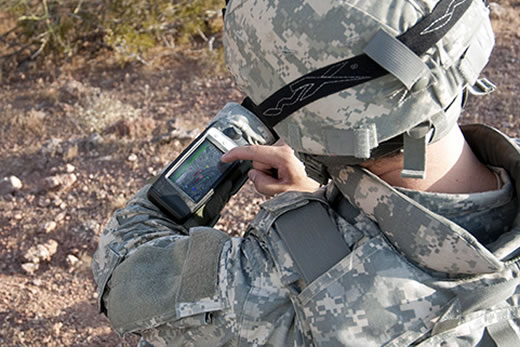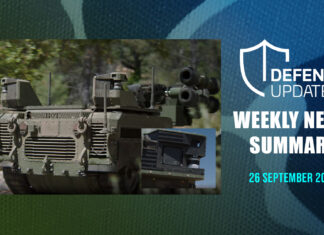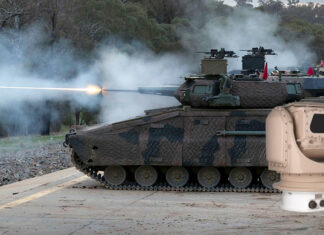
The U.S. Army will soon evaluate prototypes of wearable mobile handheld computers running battle command capability. New applications, utilizing GDC4’s GD300 and other devices, will be able to provide dismounted soldiers with network connectivity, command, control and situational awareness just like modern smartphones are doing in the commercial market. General Dynamics expects to deliver 40 prototype handheld devices by September 2011 for user evaluation under the current $2.3 Army contract. During the second phase of the program, up to 250 JBC-P interoperable handheld devices may be purchased as part a contract option. The Army plans to evaluate several versions of such handheld devices under the U.S. Joint Battle Command – Platform (JBC-P) Handheld program. JBC-P is considered by the Army as the successor network for today’s the follow-on for Force XXI Battle Command Brigade and Below, or FBCB2, delivering today’s situational awareness services at the brigade level and below.


Sofar Army units have been evaluating standard smartphone used as handheld computing devices, plugged into tactical radios to empower small Army units. During a recent exercise performed by paratroopers of the 82nd Airborne Division, JTRS HMS Rifleman and Manpack radios were married with PEO C3T prototype handhelds, demonstrating interoperability between programs of record in the “transport layer” (radios) and the “application layer” represented by reporting and situational awareness systems.
Ruggedized, Android-based smartphones were used for this exercise, running two applications a Joint Battle Command-Platform, or JBC-P Handheld, and Tactical Ground Reporting, known as TIGR Mobile. Feedback from the 82nd Airborne Division will be used to reduce risk for upcoming tests of the equipment, including the Integrated Network Baseline Exercise, or INBE, in June and the Brigade Combat Team Integration Exercise in October, program officials said.
The system relied on two communications networks supporting the different echelons involved in the exercise – the secure terrestrial network provided by HMS Manpack and Rifleman Radios supporting the individual soldier while the Warfighter Information Network – Tactical, (WIN-T) ‘Increment One’ transferred information to and from the battalion tactical operations center. A WIN-T satellite terminal known as SNAP (Secure Internet Protocol Router/Non-secure Internet Protocol Router, or SIPR/NIPR, Access Point) extended the network’s range up to higher headquarters.
PEO C3T is working with several vendors to evaluate handheld devices that support different transport methods, including Netted Iridium and several radio models selected by the Army and Marine Corps. Interoperability with existing battle command systems is mandatory for all systems and associated security services, to ensure data, communications services and networks are fully protected.

The evaluation will assess the applications of enhanced battlefield awareness by visualizing and highlighting information that might not otherwise be available with conventional aids – for example, enhancing maps with real-time position location information. “This win brings our vision of ‘every soldier connected to the network’ closer to reality. With the capabilities of the rugged GD300, combined with mission command applications like TIGR, soldiers and Marines will have the information they need to accomplish their mission more effectively,” said Kevin Merrigan, vice president of Battle Management Systems for General Dynamics C4 Systems.
For its prototype design, General Dynamics will provide the rugged, eight-ounce GD300 tactical computer that hosts an ‘apps-friendly’ operating system. Designed to provide dismounted users with situational awareness of events, people and structures, along with chat and texting capabilities, the GD300 also delivers position location information and access to popular military software ‘apps’ like the Tactical Intelligence Ground Reporting (TIGR) system. When connected to a ‘networked device’ such as the Joint Tactical Radio System (JTRS) Handheld, Manpack, Small Form Fit (HMS) Rifleman radio (AN/PRC-154) or the Iridium satellite communications handset, users will be able to make voice, video or data contact whether in close proximity or miles apart.
Related posts:



















